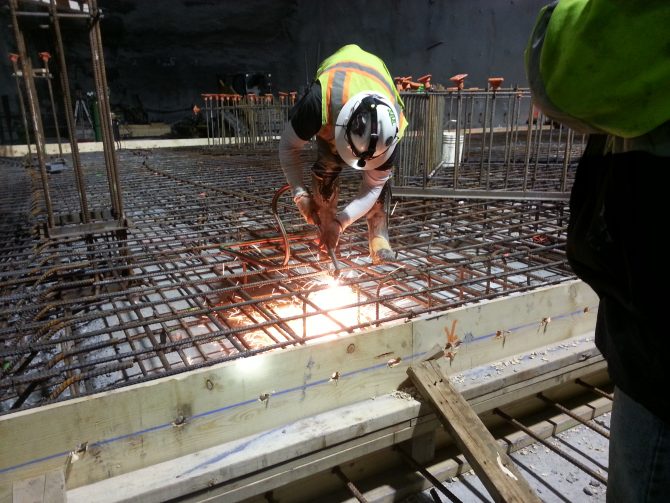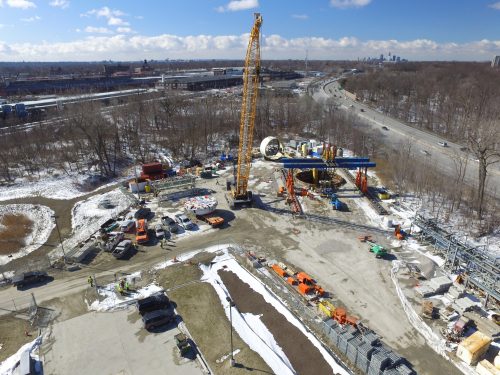EVENTS: Infrastructure Week, infrastructure strong
Posted by John Gonzalez
- 5688 Views
- May 12th, 2017
- in Miscellaneous
- No Comments
A closer look at unseen systems, and the difference between big spending and smart investments

Construction of the Easterly Tunnel Dewatering Pump Station
Some things you have to see to believe. Other things, you see every day and pay them little attention at all. Welcome to the reality of Infrastructure Week.
Every year in the middle of May, trending topics turn an eye towards the unseen often-unappreciated systems that help make the cleaner, faster, functional lives we know possible. From the sewers under your feet to the roads you travel to the network on which you’re reading this post, infrastructure is the backbone of society.
So why does society at large pay it no mind?
“Generally speaking, the U.S. earns an average grade of ‘D+’ and this goes to show that there is a huge need for us to invest in our nation’s infrastructure,” said our Public Information Specialist Jenn Elting. It’s the grade given by the American Society of Civil Engineers. It’s not good. Granted, some cities are better than others, investments are being made to modernize aging systems, but it’s not popular work. It can be hard for decision-makers to get support for major long-haul construction like sewer projects or bridge repairs when the impacts are closed roads and detours in the short term. Add that to perceptions of inefficiencies and it can be easier to simply complain about water main breaks rather than make a commitment to the cost of new pipes.
Infrastructure Week is a unique opportunity to pay attention to the amazing complexity of these systems and begin to understand what (and who) makes them work. The reality is that fixing infrastructure problems is costly, to the tune of $3 billion in the example of Northeast Ohio’s own Project Clean Lake. It’s a 25-year program and our customers are footing the bill. But it’s not just about swallowing the billion-dollar bitter pill. It’s about making the pill less bitter, less expensive, and more effective in curing what ails America’s underground.

Dugway Storage Tunnel construction
For example, when we signed our 25-year consent decree to launch Project Clean Lake in 2010, we factored in opportunities to reduce the cost with every project. We call it value engineering. And it’s paying off. We have already realized nearly $600 million in project savings through smarter investments: different tunnel sizes, modified alignments, piloting new technology, and evaluating the difference between gray infrastructure and green. Those choices pay off in long-term project costs and lower rates of increase over time.
“A lot of that has to do with the tough decisions we are making to better our infrastructure for years to come, and to protect our region’s natural resources,” Elting said.
The next time you hear that ba-dump of your tires rolling over a manhole cover, or take a detour around an orange-barreled intersection, know that the investment is helping protect Lake Erie, a drinking water source for nearly 3 million residents. We care about efficiency, we care about your rates, and we care about our environment.
Here’s to Infrastructure Week, and our efforts to keep infrastructure strong and our Great Lake great.

